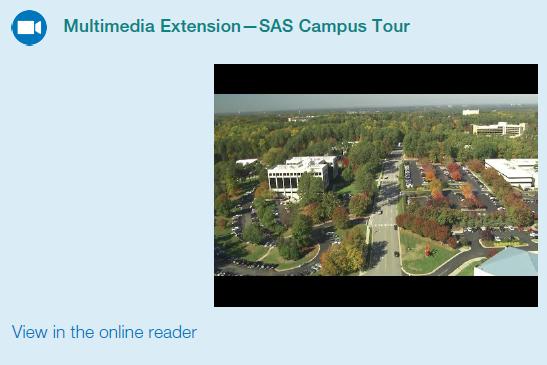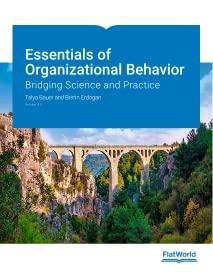Who are your best customers? Which customers are bringing you the most profits and which are the
Question:
Who are your best customers? Which customers are bringing you the most profits and which are the least profitable? Companies are increasingly relying on complicated data-mining software to answer these and other questions. SAS Institute Inc. is the second largest privately held software company in the United States; of the top 100 companies from the 2018 Fortune Global 1000 list, 92 are SAS customers. Founded in 1976, SAS has its headquarters in Cary, North Carolina. The company that began as a research project designed to analyze farming data is doing extremely well by any measure. As of 2019, they had nearly 14,000 employees worldwide, were installed in 147 countries at over 83,000 locations, and reported $3.3 billion in revenue in 2018. The company is quick to attribute their success to the performance and loyalty of their workforce. This is directly correlated with how they treat their employees. SAS, which stands for Statistical Analysis System, has perfected the art of employee management. Jenn Mann, VP for HR at SAS is quoted as saying, "SAS employees understand how important their contribution is for the company's success. Our stimulating work environment and high levels of trust provide employees with the freedom to test new ideas while maintaining a healthy work-life balance. This recognition proves yet again that happy, creative employees drive results." SAS has been ranked on Fortune magazine's best places to work list every year since the list was first published, including being named number 1 in 2010 and 2011. Employees seem to genuinely enjoy working at SAS and are unusually attached to the company, resulting in a turnover rate that is less than 5% in an industry where 13.5% is the norm. In fact, when Google designed their own legendary campus in California, they visited the SAS campus to get ideas. One thing SAS does well is giving its employees opportunities to work on interesting and challenging projects. The software developers have the opportunity to develop cutting-edge software to be used around the world. The company makes an effort to concentrate its business in the areas of analytics, which add the most value and help organizations best analyze disparate data for decision making, creating opportunities for SAS workers to be challenged. Plus, the company removes obstacles for employees. Equipment, policies, rules, and meetings that could impede productivity are eliminated.
The company has a reputation as a pioneer when it comes to the perks it offers employees, but these perks are not given with a mentality of "offer everything but the kitchen sink." There is careful thinking and planning behind the choice of perks the company offers. SAS conducts regular employee satisfaction surveys, and any future benefits and perks offered are planned in response to the results. The company wants to eliminate stressors and anything that dissatisfies from people's lives. To keep employees healthy and fit, there are athletic fields; a full gym; a swimming pool where employees can swim or play inner tube water polo; and tennis, basketball, and racquet- ball courts on campus. Plus, the company offers free on-site health care for employees, covers dependents at their fully staffed primary medical care center, provides flexible scheduling, and offers unlimited sick leave. The company understands that employees have a life and encourages employees to work reasonable hours and then go home to their families. In fact, a famous motto in the company is, “If you are working for more than eight hours, you are just adding bugs.” SAS is truly one of the industry leaders in leveraging its treatment of people for continued business success.
Questions
1. SAS is involved in cutting-edge technology. Does this give it a distinct advantage in employee retention and satisfaction over, for example, a manufacturing company or a food retailer?
2. Do you feel that investing heavily in employee perks ultimately pays off for a company? Would you feel the same way during hard economic times, when the pool of highly qualified workers grows and the number of available jobs shrinks dramatically?
3. How much of an advantage does SAS have, given that the company produces analytic software to help businesses improve their functionality?
4. In addition to giving employees interesting and challenging projects, SAS also places a high level of trust in its employees. In your opinion, how do these factors contribute to employee creativity and innovation?
5. What do you think you’d like about working at SAS? What would you not potentially like?
Step by Step Answer:

Essentials Of Organizational Behavior Bridging Science And Practice
ISBN: 9781453339244
1st Edition
Authors: Talya Bauer, Berrin Erdogan





